

Kinkaku-ji, or the Gold Temple, was built by one of the Tokugawa Shoguns in the 1300s. The temple burned down (surprise, surpise!) and was rebuilt in the 1950s. However, the gold started to fade and about 10 years ago, the temple was "regilded." So, now it is really shiny and pretty! The Shoguns built lots of things because they had lots of money. They were also the de facto rulers of Japan for large stretches of ostensibly Imperial rule. I'll talk more about Shogun history for Nijo-jo. "Kin" means "gold" and "ji" means "temple," but the meaning of "kaku" is a little more vague. From the explanation I received, I gather that it implies that the temple is only for the administerial upper-class, such as the Shogun and his ministers. In addition, Kinkaku-ji is just the common name for the gold pavilion. The name of the entire complex is really Rokuon-ji Temple.
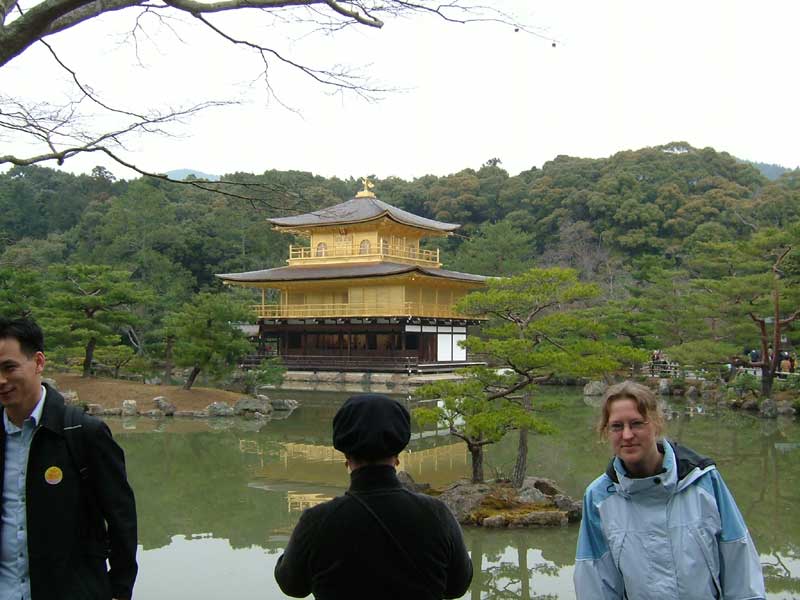
The setting for Kinkaku-ji and the building itself are both gorgeous. It juts out into a pond with little islands and lots of nicely-shaped (and tended) trees in the surroundings. We were both stunned when we saw it. It's really gold! Well, gold-leaf lacquer.
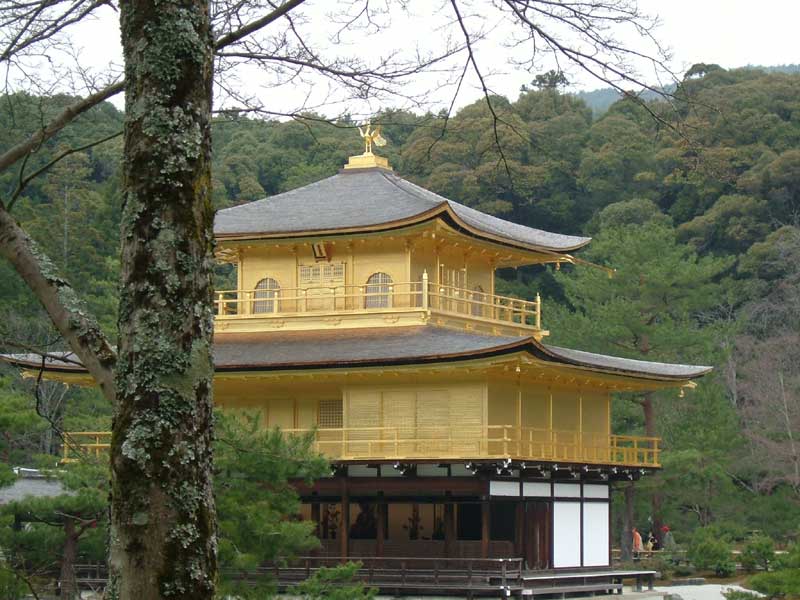
Here's a closer view of the temple. It's a pretty simple two-tiered building, and actually it's not all that large. But it is very beautiful.
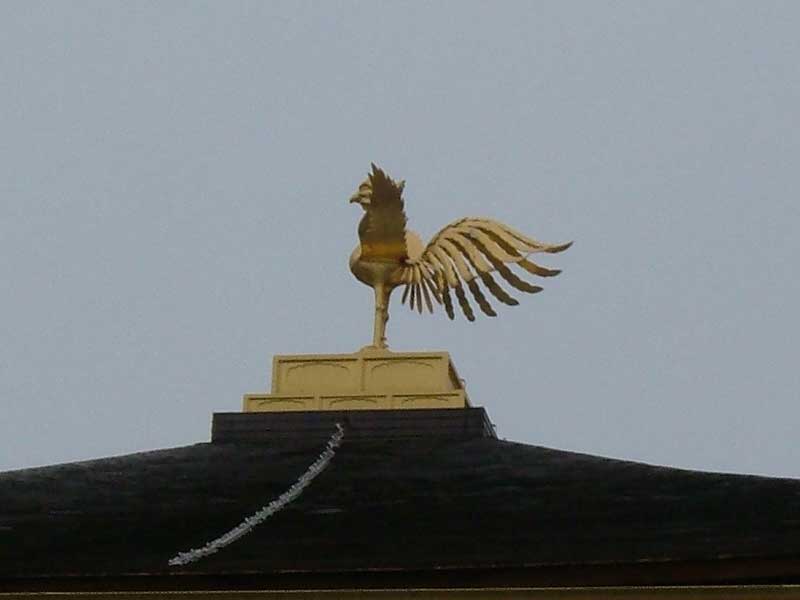
This is a closer look at the rooster on top of the temple. I'm not sure why he's there, but he keeps an eye on things.
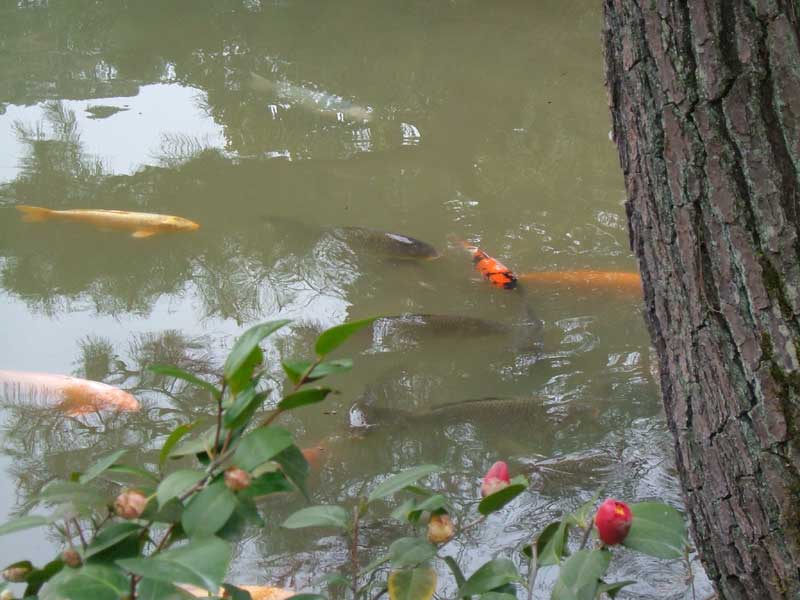
The pond that surrounded the temple (Kyoko-chi or Mirror pond) was inhabited by some large koi. They're gold too!
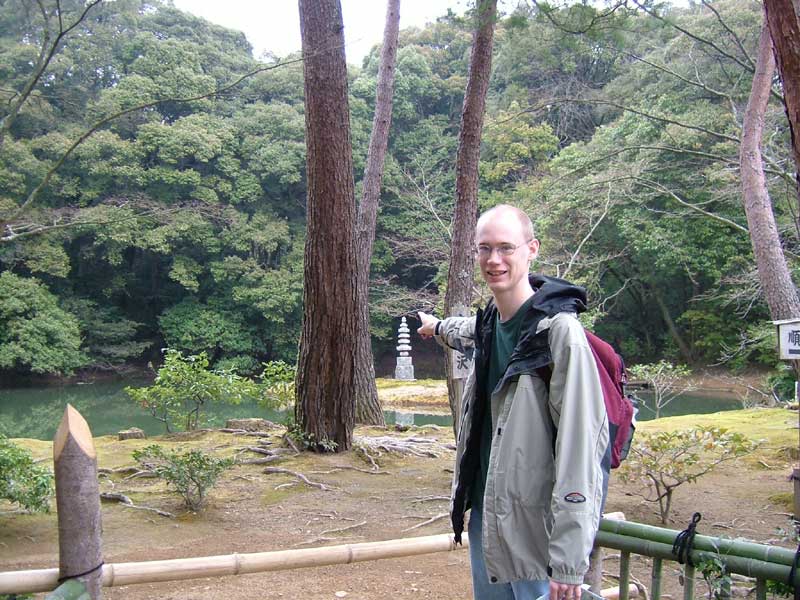
Along the path leading back away from the temple, we ran into this small stone monument on an island. It is called Hakuja-no-tsuka, or "Mound in memory of the white snake." I'm not sure what that means.
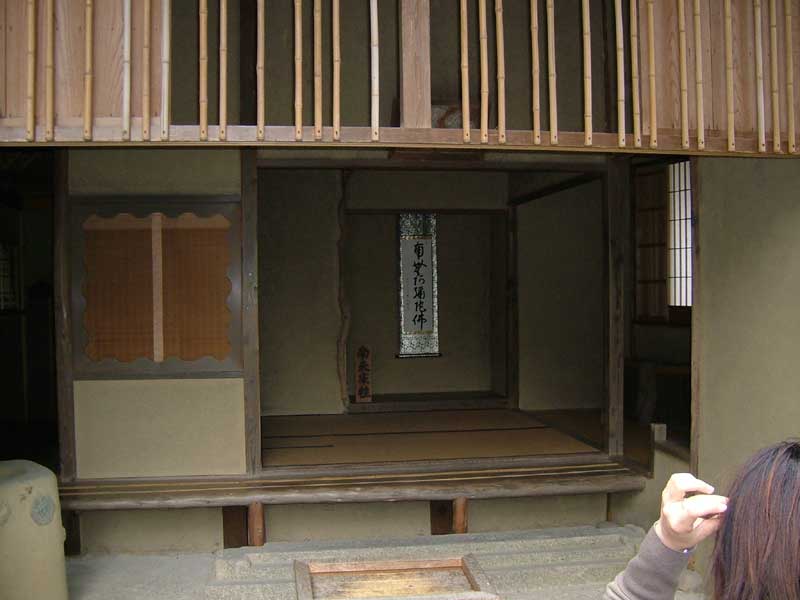
This is a tea room. The name of this tea-house is Sekka-tei. There were ladies in kimono serving ceremonial tea to foreigners in this area (but not in the tea house itself). We didn't participate because it costs a bit of money, and we've done tea ceremony for free many times already.